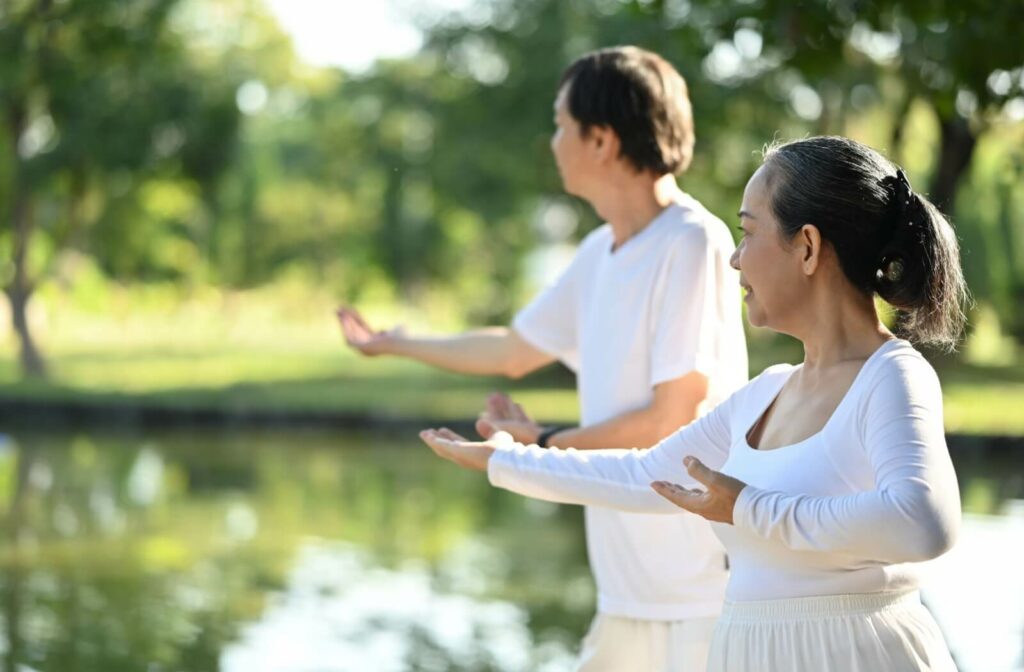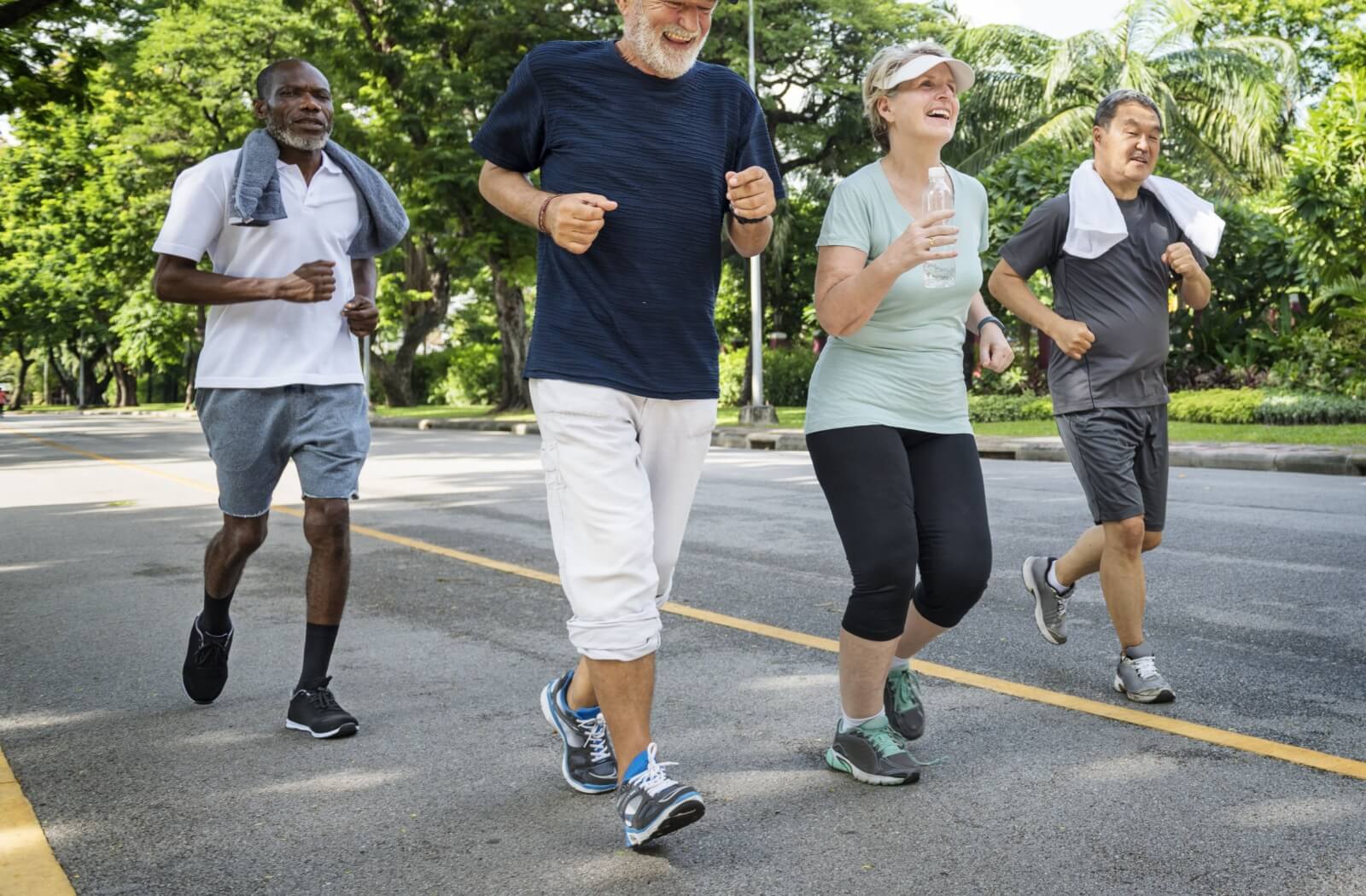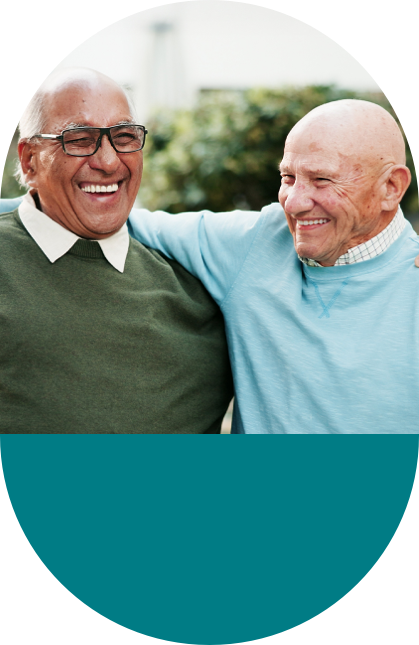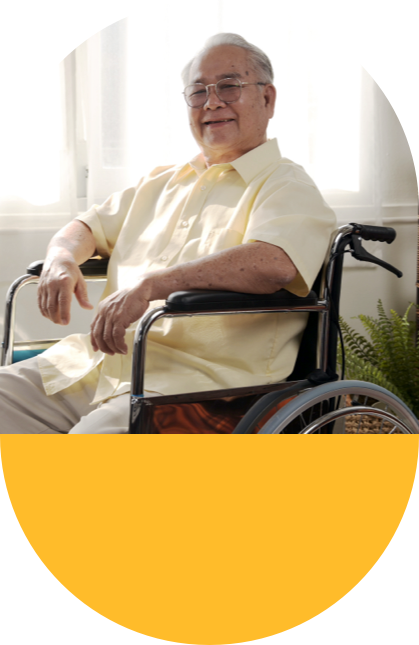It’s no secret that our bodies change as we live longer, which may impact our general health and capacity to carry out daily tasks. A notable change we can expect is a reduction in stability and balance, which raises the possibility of accidents and falls.
Older adults can benefit greatly from adding balancing exercises to their fitness regimen. These benefits can include:
- Reducing the risk of falls
- Enhances mobility and independence
- Strengthens muscles and joints
- Improves cognitive function
- Boosts confidence and reduces fear of falling
- Promotes recovery and prevention of future falls
Physical Mobility & Impact on Overall Health
Before we discuss the benefits of supporting balance for older adults, let’s consider why maintaining physical mobility is important to overall health.
Physical Health as We Live Longer
Maintaining physical mobility as we live longer is crucial for enhancing the overall quality of life and independence. Regular movement and gentle exercise not only keep the body flexible but also:
- Improve circulation
- Encourage muscle strength
- Support joint health.
By taking a preventative approach to physical well-being, older adults can feel more confident and autonomous and can experience a noticeable decrease in the risk of falls and injuries.
Additionally, physical activity improves mental health by reducing the signs and symptoms of anxiety and depression, promoting social interaction, and enhancing cognitive abilities. These findings highlight the connection between overall health and physical mobility.
The Benefits of Balance Exercises for Older Adults
Let’s explore the many benefits of performing balance exercises for older adults.
Reduce the Risk of Falls
Falls can be a primary source of injury for older adults, but doing balancing exercises can dramatically lower the risk of falling. Individuals can carry out daily tasks more safely and confidently by increasing their stability and coordination, which lowers their risk of falling.
Enhances Mobility & Independence
Maintaining balance is necessary for motion, even in seemingly simple actions. Regular balance training can help individuals maintain or even improve their mobility, allowing them to do daily tasks independently. This independence is critical to an older adult’s quality of life and self-worth.
Strengthens Muscles & Joints
Exercises focusing on balance require using several muscle groups, including those in the back, abdomen, and legs. Strengthening these muscles supports the joints, reducing the risk of acquiring ailments like arthritis and joint pain. More powerful muscles also support a more stable, vertical posture.
Improves Cognitive Function
Recent research indicates a link between physical exercise, such as balancing drills, and cognitive function. Critical cognitive skills like spatial awareness, coordination, and reaction times that can diminish with age are improved by these exercises.
Boosts Confidence & Reduces Fear of Falling
For some older adults, the fear of falling can limit activities and social interactions. Engaging in balance exercises builds confidence in one’s physical abilities, which can mean less worrying and a more active lifestyle.
Promotes Recovery & Prevention
For those who have already experienced a fall, balance exercises can be an essential part of the recovery process, helping to prevent future falls by strengthening the body and improving balance.
Incorporating Balance Exercises into Your Daily Routine
Here are a few practical balance exercises that older adults can easily integrate into their routines:
Balance on One Leg
This is a very straightforward exercise that has a significant impact on balance. To perform the task:
- Take a position behind a chair and grasp it for stability.
- Maintaining your weight on the other leg, slowly raise one foot off the ground.
- Try to hold this posture for 10 to 20 seconds, then switch your legs.
- As you get more comfortable, try to extend the time and, if you can, gradually reduce how much you rely on the chair.
Heel-to-Toe Walk
Another great exercise for improving balance and coordination is the heel-to-toe walk. As though you were tightrope walking:
- Start by putting the heel of one foot squarely in front of the toes of the other foot.
- Step forward slowly and deliberately, making sure that every step brings your heel and toes into contact with or very close to them.
- Take 10 to 20 steps in front of you, and then cautiously take the same amount of steps back.
Standing Leg Lifts
For this exercise:
- Lift one leg carefully to the side while standing behind a chair for support.
- Maintain a straight back and resist leaning to the other side.
- After a few seconds of holding the pose, lower your leg.
- For each leg, perform this action five to ten times.
This workout tones your leg and hip muscles while also enhancing your balance.
Tai Chi

Older adults who want to increase their stability and balance will benefit from tai chi, a type of martial art that is well-known for its minimal-impact movements and health advantages. Its fluid, precise motions emphasize control and precision, improving mental clarity and coordination.
Older adult-specific tai chi sessions and introductory classes are available at many community centers and gyms.
Moving Toward a Balanced Life
Including these exercises in a daily or weekly program can greatly enhance an older adult’s physical health and general well-being. But before starting any new fitness program, it’s imperative to speak with a healthcare professional, particularly if there are any underlying medical concerns.
Juniper is here to help you navigate life as an older adult. Book a tour today for more information about our communities, services, or experiences!







